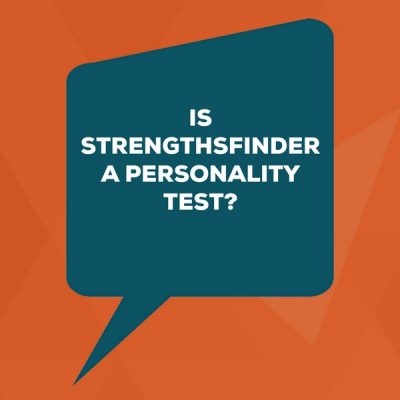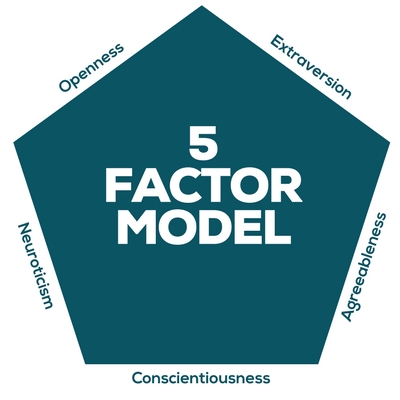Is CliftonStrengths Considered A Strengths Personality Test?
Podcast: Play in new window
Subscribe: Spotify | iHeartRadio | Email | TuneIn | More
 Strengths Episode - Is this a Strengths Personality Test?
Strengths Episode - Is this a Strengths Personality Test?
In this episode Lisa answers the question, "Is StrengthsFinder or CliftonStrengths the same thing as a strengths personality test?" She uses proof from both research data and real-life examples. She shows that StrengthsFinder is actually not a personality test, but instead a performance-based tool.
Resources of the Episode
To find proof points and stats that can help you make the case for focusing on Strengths at your organization, check out the Strengths Stats Page.
If you're comparing StrengthsFinder to Enneagram to see if they can work together, here's an overview you can use as a starting point.
If you're comparing StrengthsFinder to DiSC to understand the similarities and differences, check out this overview for additional info.
If you're comparing StrengthsFinder to MBTI, here's a great overview to check out.
Here's a Full Transcript of The Show Focused on Your Strengths Personality Test
You’re listening to Lead Through Strengths, where you’ll learn to apply your greatest strengths at work. I’m your host, Lisa Cummings, and I’ve gotta tell ya: using your strengths at work is one of the most energizing things you can do for your workplace.
Today, the question is whether StrengthsFinder is a personality test. I get this question often. It comes in many forms. Usually, it comes from managers or strengths champions who are asking me a question because they were trying to get strengths to be implemented in a bigger way in their organization, and they got stymied.
It sounds something like this, “Oh, no, not another personality test,” or they take it to get approved and they hear, “Oh, we already had a personality test last year.” Or, somebody says something like, “I’m not sure I’m into these personality tests.”
What Is StrengthsFinder?
It surprises many people to learn that StrengthsFinder is actually not a personality test at all. So, if you’re making a case for rolling out StrengthsFinder or Strengths-focused culture tools, it is nice to know that it is something totally different. It’s actually a performance-based tool.
I’ll give you an explanation of how it’s different from the typical personality test. Then I’ll give you a proof point or two you can use in your workplace. I'll also offer you a way of thinking about this topic to explain the difference between what people do on the job, and how they get it done on the job.
I think this is an important thing to explore when you’re rolling out StrengthsFinder because some workplaces are really focused on the knowledge and skills someone needs to do the job – that’s the what part – but they don’t spend very much time focusing on how people can show up at their very best.
Focusing On Strengths Every Day Increases Productivity
Let’s start with a proof point. If you’re going to do an initiative like StrengthsFinder in your organization, you want proof points like Gallup’s research that shows teams that focus on Strengths every day have 12.5% greater productivity than those who don’t. And, at the end of the show, I’ll give you a bunch more of those, a place where you can find the proof points that are most relevant to your organization and to your situation.
Personality Tests (Assessments) Are Usually Based On The 5-Factor Model

On the personality test question, the thing I think is most important for you to understand is that most of these personality assessments that exist are actually based on the five-factor model that you can learn about when you study psychology. If you have industrial organizational psychologists in your organization, they’ll know all about the five-factor model. Even if you’re not an I/O psychologist, you probably know about these because you’ve heard of DiSC, or Myers Briggs (MBTI), Insights, or Hogan. These are different assessments that are based on the five-factor model. Those 5 factors are things like Extraversion, Agreeableness, Conscientiousness, Neuroticism, and Openness. Most of those, although not all, throw out the Neuroticism category.
Your CliftonStrengths Are Your Areas Of Greatest Potential
How is this different from StrengthsFinder? The answer is in the study of performance excellence. StrengthsFinder researchers at Gallup studied performance for decades. They discovered Themes that people use to deliver their best performance.
In Gallup’s words, Talent Themes “are the areas in which an individual has the greatest potential for building strength.”
There are 34 of these Talent Themes. When you get your Clifton StrengthsFinder results, you’ll actually see that they’re actually called Talent Themes. To put it in layman’s terms, think of them like easy buttons...easy buttons that people use to approach their goals.
The "What" Part: Knowledge, Skills, Experience
For example, say you lead a marketing department. There’s what you do and then there’s how you do it. In the “what” category, you have things like knowledge and skills and past experiences. Inside of a greater marketing department you have high-level knowledge and skill areas: things like marketing communication, product marketing, demand generation, pricing, etc. Of course, each area can go really deep into sub-level skills.
If you take something like a creative team inside of marketing, they’re going to have really specific knowledge and skill areas: graphic design, color, Adobe InDesign, buyer psychology, all sorts of layers like that.
In those “what” categories (like the ones mentioned above), people are pretty good at understanding what they need to know. Those are easy enough to identify. You can tell when they are present or when they’re not. And you can figure out how to go get those knowledge and skill areas.
The "How" Part: Your Talents - How You Naturally Think, Feel, And Act
The trickier part is “how” every unique human being approaches that job at their very best. This is why, of course, we’re humans and not robots, so we’re a little more complicated. Each person can’t just approach the job in the exact same way and get the same results. As a manager, StrengthsFinder can help you tap into each person’s best performance because it tells you what their easy buttons are, or “how” they can uniquely get that job done at their best.
If you manage that same team of creative pros, you’ll see they’re reaching their best output when you can get it done through their talents. For example, someone who leads through the Futuristic Talent Theme will want to know where that specific marketing campaign is going to take the company and the customer so that they can align to that.
If you contrast that with somebody who has the Maximizer Talent, they’re on the same creative team and they have to get the same job done, but you may find that they’re totally focused on something else. They’re over there trying to reuse some video footage so that you can get more out of something that already exists. Or they’re off creating actions in your Adobe InDesign software to save time on repetitive tasks - to free them up to get more time in their creative headspace.
You can see that within this same job, you can have two people who are off in their own worlds doing very different things, but those very different things are the things that put them at their best. This is how your StrengthsFinder Talent Themes, once you know them, can really help you unleash their easy buttons to perform at your best. Of course, as a people manager, this is like magic once you learn each of these things about your team members, because you can understand how to put them in that environment to get them at their very best.
StrengthsFinder Is An Assessment Built On Performance and Potential
To bring this episode all together, StrengthsFinder, in fact, is not a personality test. It is an assessment that was built on the study of performance and potential. If you want to look up, specifically for you and your organization, proof points that will be most supportive of the objectives you have in your organization, check out LeadThroughStrengths.com/stats. You’ll see a page that has dozens of proof points and stats that can help you make the case for this in your organization.
A final note, if you’re listening as a people manager or a strengths champion, one of the reasons I think it’s important to answer this question about personality test is that I also see, when people take personality tests or surveys or assessments, (whatever you choose to call them), on the receiving end of them, your employees are often guarded about the conversations that follow.
They are nervous that you’re going to come up with labels for them. They might have had some experiences in the past where they’ve been put into a box about how they are, or who they are as people.
Depending on who you have on your team, you might have to do some work in explaining how StrengthsFinder is framed: that it is focused on those areas of their greatest potential. Usually they see it very quickly and they’re super psyched because you’re talking about what makes them great.
When I do StrengthsFinder training programs, I don’t find many resistors to the process (like I did when I facilitated programs based on personality assessments). It’s one reason why I love StrengthsFinder so much. But coming into it, many people don’t know this, and they don’t know how it is all going to be framed up or applied on the job.
Depending on how they’ve been used in your organization in the past, or if you sense that somebody is a little hesitant about all of this kind of stuff, it’s helpful to share how the point of going through the process with StrengthsFinder is to find their greatest area of potential so that you can unleash their strengths at work.
If you do this in a way that shows you, as a leader, are being supportive of them, and putting them at their best and that, in fact, when you’re using your strengths at work you feel more ease and energy and enjoyment on the job, most people pretty quickly go, “Okay. I’ll give this thing a chance.”
Luckily, in my experience, the hesitant people have been a very small slice of the population. I would say, anecdotally, more than 95% of people in any given room or organization come in pretty excited about the future when we do StrengthsFinder or Strengths-based process.
In fact, one guy recently said,
“Oh, my gosh, that StrengthsFinder report was full of the nicest things anyone has ever said about me.”
I thought he summed up really well - people’s reaction to it when they first get exposed to StrengthsFinder, and how it can explain what puts you at your very best.
With that, I hope this helps you as you make the case to bring a Strengths-focused culture to your organization. From here, I hope you’ll take this information and use it to help people in your company claim their talents and share them with the world.
Carmie is a professional writer and editor at Lead Through Strengths. Having spent 8 happy years with a nonprofit child organization as a storyteller and sponsorship relations team manager, she continues collaborating with others across the globe for the joy of human development and connection. Her days are powered by coffee, curiosities, cameras (film and digital), music, notebooks, and a cat. Where books are home, she’s home. She calls her Top 5 StrengthsFinder Talents “CLIPS” (Connectedness, Learner, Intellection, Positivity, and Strategic)–you know, those tiny objects that hold connected things together. She’d like to think she’s one.

